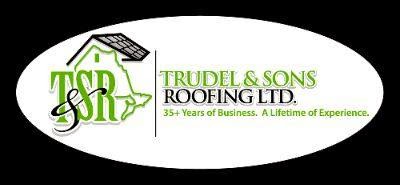Safety First! As with shingle removal, safety should be your main concern (whether you’re on a flat roof or a pitched roof with steep surfaces). Borrow or purchase a heavy-duty, sturdy ladder—or consider renting scaffolding for safer access to extreme heights. In addition, consider a fall protection kit that comes with a harness, roof anchor, lanyard, counterweight and rope. Your fall protection kit should be used in conjunction with a hard hat, work gloves and slip-proof boots to prevent injury.
On top of applicable safety equipment, roof replacement and repairs require several common tools that can be purchased at your local hardware store or rented from a local equipment rental shop.
Tools Needed For Shingle Roof Replacement or Repair: Assuming that the flashing, felt and roof deck are in good order after removing your old shingles, when you are ready to repair or replace your shingle roofing you’ll need:
- 2×4 LUMBER STRIPS
- #16 NAILS
- HAMMER
ASPHALT ROOF SHINGLES: Remember to select shingles that complement your home’s paint and trim. Shingles are generally sold in “squares,” and each of these units cover roughly 100 sq. feet.
ASPHALT ROOFING CEMENT: Applied to the back side of each shingle, roofing cement helps to secure the shingle during nailing and ensures a tight fit to the roof’s surface. It’s also a good idea to apply roofing cement to nail heads to avoid small leaks.
GALVANIZED ROOFING NAILS: Used to secure shingles during installation. Hammer several galvanized nails through self-sealing strips found on each shingle’s surface.
REPLACEMENT FLASHING: As you install shingles around eaves, ridges and valleys, it’s important to make sure that all metal flashing is in tact. If not, you’ll need to reapply replacement flashing strips as needed.
UTILITY or SHARP LINOLEUM KNIFE: Used to cut portions of shingles or trimming shingles to the correct shape and size.
CHALK LINE: To ensure symmetrical placement of shingles, most roofers snap horizontal and vertical chalk lines on the roof deck. A level is also a useful tool for measuring exact shingle positioning.
You should always consult a roofing professional prior to embarking on any "DIY" repairs or replacements. Trudel and Sons Roofing is a family-owned and operated roofing company with more than 30 years of experience in both residential and commercial roofing repairs and re-roofing. Call us today for your comprehensive consultation at: (905)642-3515


No comments:
Post a Comment